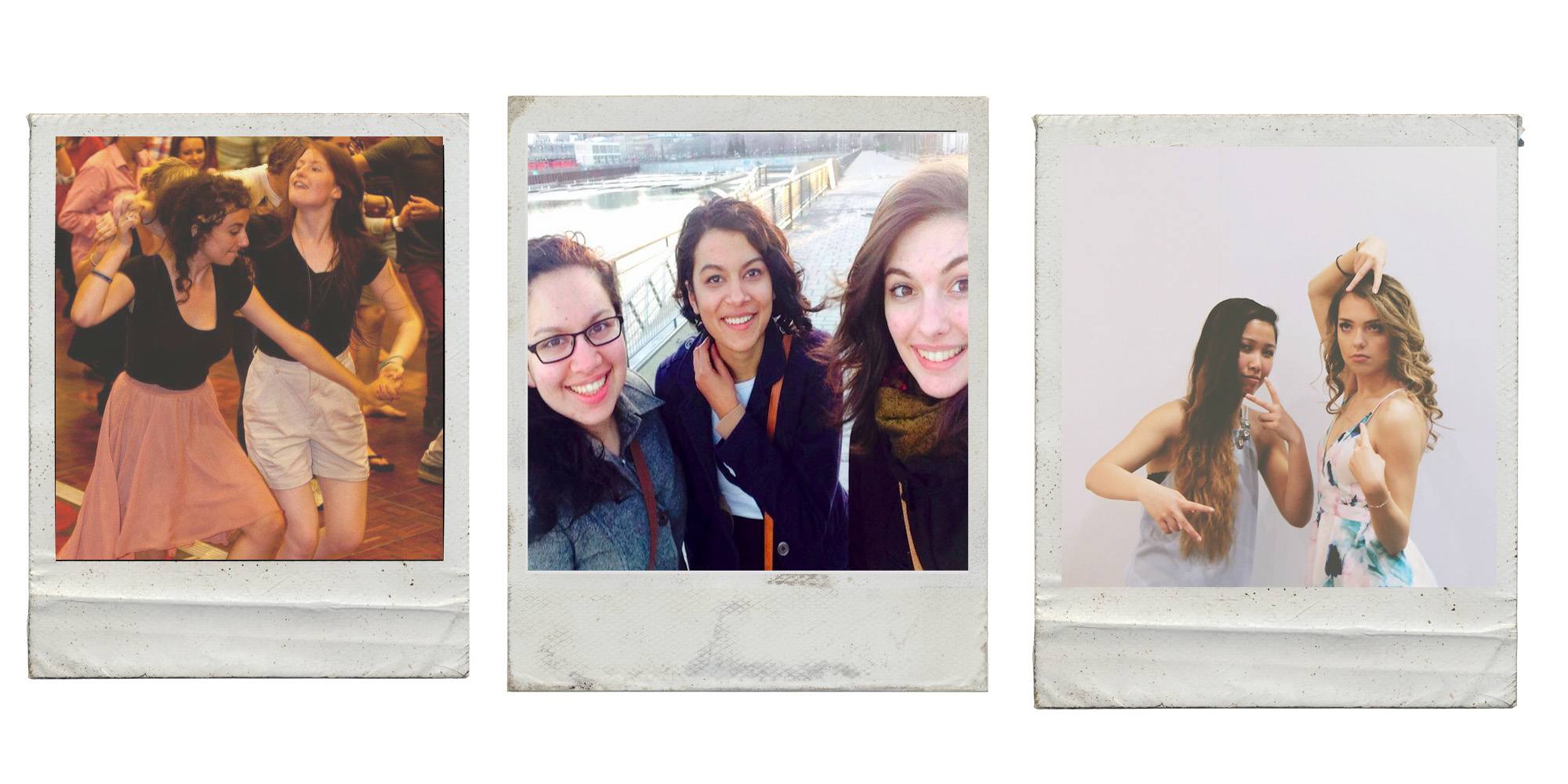You are my R, you are as deep as the roots of a tree and joyous like its leaves soaking in the sun, you are stable and solid like a mountain, but rapid, delicious, scintillating, and in continuous renewal like a spring or brook, and you are weightless but so strong, mutable and pure like air. You are my light, in my darkest moments I have thought only of you and I prayed to see you again. I will never be able to explain to you what the sole thought of you unleashes in me. I am only surer than ever that you are the biggest and truest love I will ever have. It is as always, us two and then the world.
In my first year of university I took a course on the history of sexuality, and part of the syllabus involved learning about female romantic friendships. Romantic friendships have existed throughout history in beautifully organic and varied ways, but the term generally describes a deep bond of love and friendship, and an intensely romantic expression of affection between two women. I had never heard the term before, but it felt like something had clicked into place. The more I learned, the more I became convinced that I had found a phrase that explained the complexity of love that I felt at first for one, and then for many other people in my life. What I learned in that class gave me a basis for a personal exploration of the boundaries between love, friendship, sex, and romance.
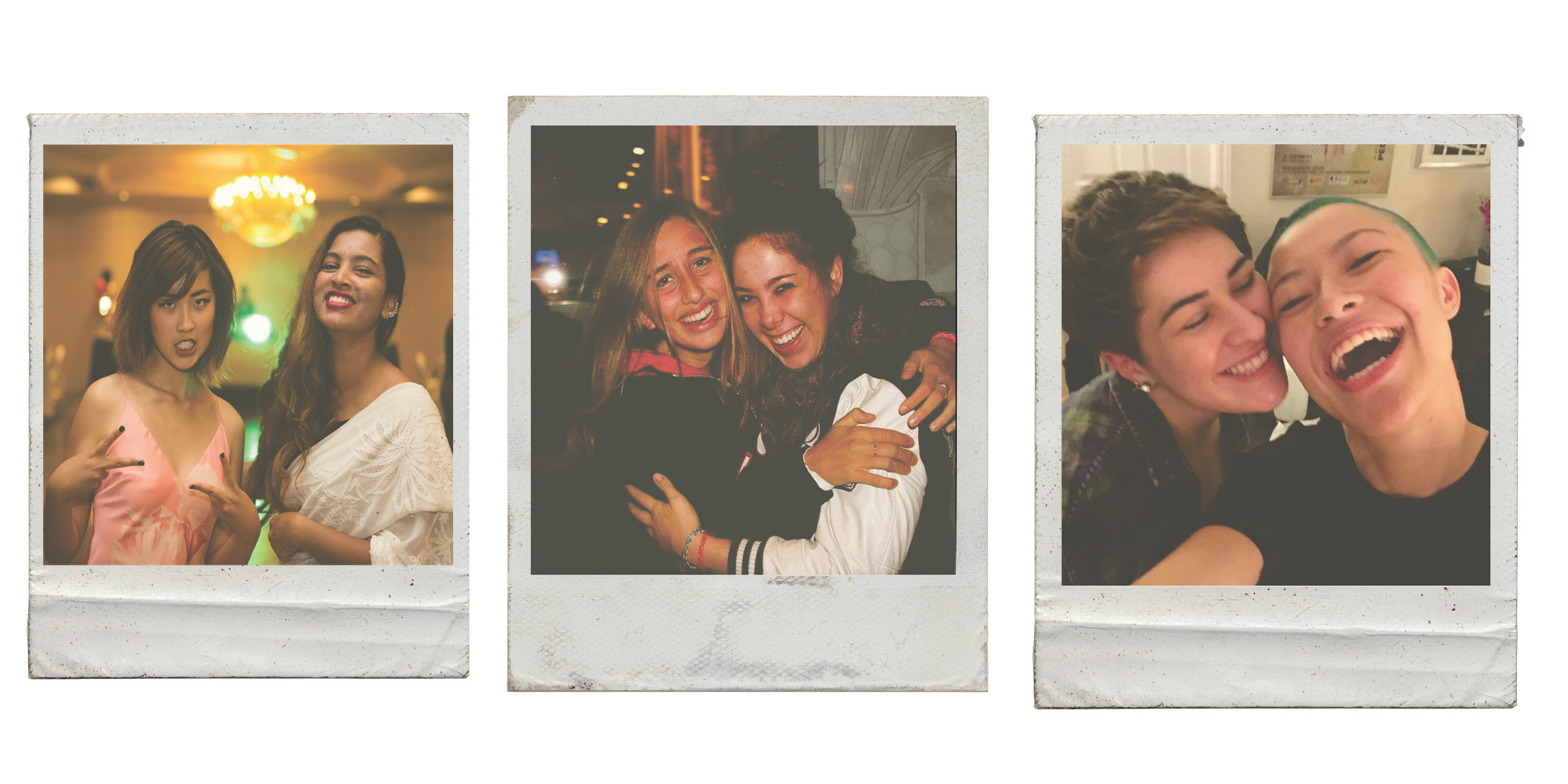
The rise and fall of romantic relationships
“I love you, I miss you so much, endlessly, more and more.” “All I can say is I love you more than any other existing thing and I miss you more than air.” “You are my life. You are my reason for existing.”
Before going any further I would like to acknowledge that this class centered around the experiences of white women. My knowledge of the history of romantic friendships has the same flaws. While the term “romantic friendship” has been historically applied to white women, similar relationships have existed in various marginalised communities under other names, and with their own rich histories. I don’t have extensive knowledge or personal experience sufficient to speak to those realities, but I should note that white romantic friendships are not unique or solitary in their existence.
In the 17th and 18th centuries, romantic friendships were looked upon favourably – even encouraged – by society. Some believed that men and women fundamentally could not understand each other and should only seek company with members of their same sex. Other times, they were encouraged because, though lesbianism hadn’t yet gained visibility, men found it sexually appealing for women to show each other love. Many believed intense friendships between women allowed women to practice affection before marriage. Thus, romantic friendships became a mark of a noble, genuine, devout and trustworthy woman.
But the main reason romantic friendships were allowed was because no matter how many public declarations of passion, undying love, and displays of affection women bestowed upon each another, society was firmly convinced that sex between women was impossible. It was believed that without male penetration, a woman could not have sex, but also, more importantly, that women did not want to have sex. If women were recognized as having sexual desires, romantic friendships would not have been allowed to flourish.
As it was, in the 17th century, the poet Katherine Philips wrote love poems to ‘Lucasia’ (a woman whose real name was Anne Owen), describing her as “dear object of my Love’s excess,” declaring that she hadn’t lived before loving her, and that in her, Katherine found all the world.
I did not live until this time
Crown’d my felicity,
When I could say without a crime,
I am not thine, but thee.
In 1778, Sarah Ponsonby and Eleanor Butler, two upper-class Irish women, eloped together. They established themselves as the “Ladies of Llangollen,” living together for fifty-three years, and entertaining visitors who travelled to observe their “unconventional lifestyle.” Also, in the 18th century, the author Elizabeth Carter wrote of her love for Catherine Talbot declaring, “Nobody has been observed to lose their way, run against a door, or sit silent and staring in a room full of company in thinking upon you, except my solitary self.”
If women were recognized as having sexual desires, romantic friendships would not have been allowed to flourish.
Women’s passionate love for one another was recognised amongst themselves as something purer, characterised by companionship, emotional connection, and equality. But women also gravitated towards strong attachments to each other in an attempt to become financially independent of men. Ponsonby and Butler’s elopement foreshadowed the Boston Marriages of the late 19th and 20th centuries in the U.S., wherein middle class women would live together, financially independent of any man.
As women gained social power in the 19th century – fighting for education and the right to vote – men grew increasingly anxious about the implications of liberated women for traditional family structures. Romantic friendships, though once encouraged, were suddenly a threat, since they undermined male authority and dominance, and offered women an alternative to heterosexual marriage.
But the final blow to romantic friendships was struck by the rise of sexology – a field of study created and populated by men. Sexology pathologized many sexual acts including, of course, homosexuality and lesbianism. Books began cautioning young women against sharing intimacies with other girls, and prodded parents to discourage such relationships. In 1896, the English sexologist Havelock Ellis published a book, Sexual Inversion, which recounts his conversation with a patient, Miss M. She revealed that she had romantic friendships and always found them spiritually enriching until she read the sexologist Richard von Krafft-Ebing’s work, Psycopathia Sexualis, and ‘realised’ that she was unnatural and depraved.
Not only did society now condemn intimate female friendships, but healthy women also began to see themselves as psychologically unstable. Women now had to ascribe a sexual identity to their feelings – while under the additional pressure of knowing that lesbians were ostracized and condemned. How were women who had grown up thinking their love for each other was ennobling now meant to self-identify?
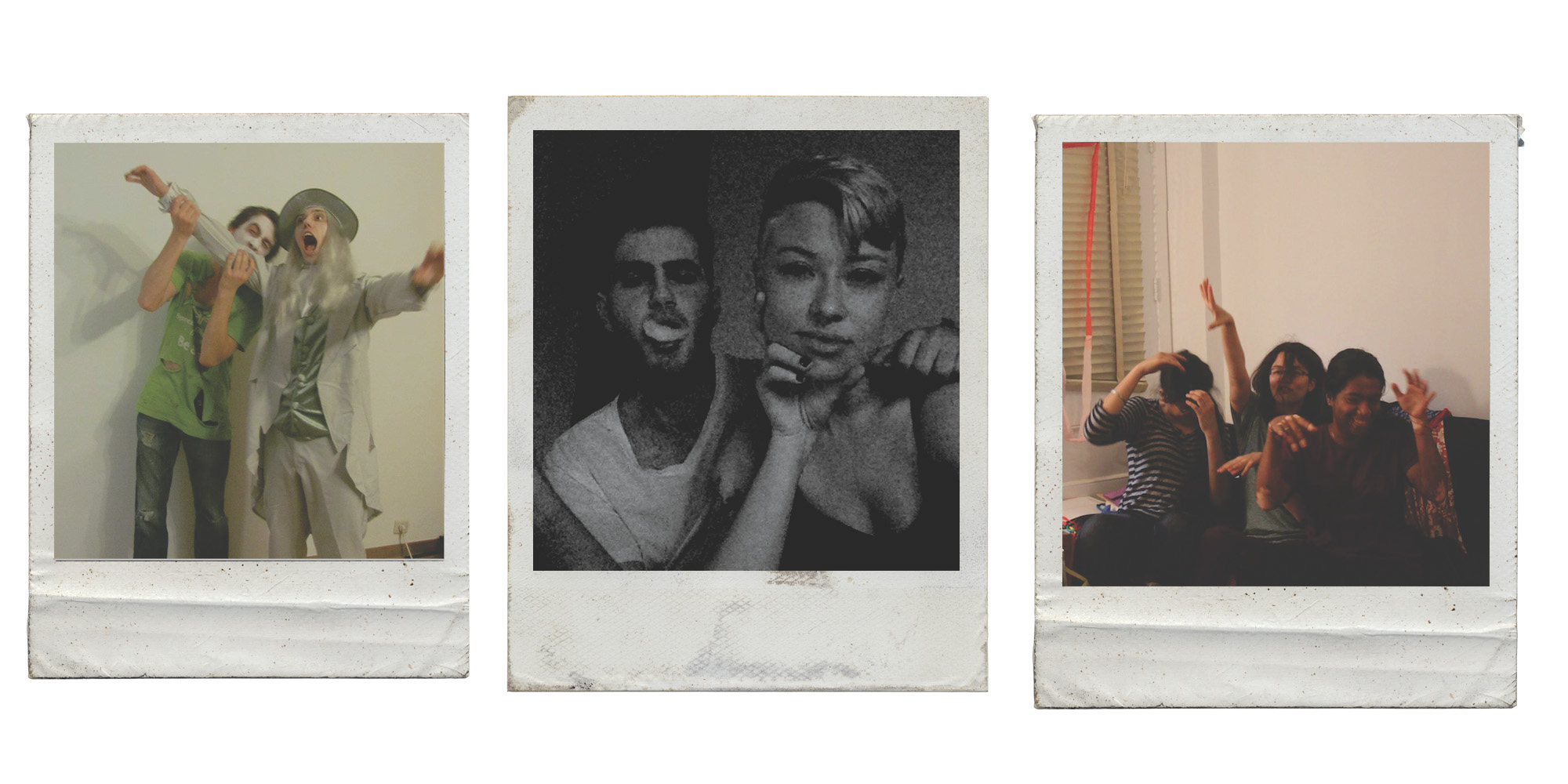
Compulsory heterosexuality and the hierarchy of love
I’ve never since felt such a depth of love. I knew her every scent, every single expression in her eyes. My body remembers the pressure of her legs on my lap, the way she would pinch me and make me scream and we would wrestle, a mess of tangled limbs and golden and black hair, until I inevitably fell on the floor. She would turn to me in the middle of a sentence while talking to someone else, knowing that I would have the precise date and series of events that she was referencing, including our outfits and how she’d felt about the situation. The boundaries between our bodies and minds were unendingly blurred.
As soon as I began studying romantic friendships I knew why I was so deeply interested: here, finally, was some other woman’s deep and passionate love for her friend, a love I knew and felt so keenly in my own life. I thought my friend R and I had been alone in what felt like the truest, most pure, elevated and profound, soul-reaching and expanding, life-claiming love for each other. In actuality, we were participating in a long history of female love – one that is suspiciously absent from common discourse.
R and I were inseparable. On the rare occasion that we would go out without one another, people would stop us and ask where our other half/comrade/associate was. We would write each other declarations of love, we took nude photos of each other and together. I was a planet orbiting around her, my sun. I knew with a deep certainty that she was the only person, aside from my immediate family, that I would die to save (it’s never really clear why exactly one needs to die to save people, but I knew that I would be game to try). But for all this deep and clear love for one another, R and I dated men – obviously.
Then I learned how men had felt threatened by romantic friendships, and had quickly demonized and invalidated them (as men are so quick to do to anything that undermines their dominance). I felt crushed under the weight of this knowledge. It seemed like romantic friendships had never recovered from the fatal blow dealt to them by sexology and the patriarchy in the 1800s. When women were taught that their love for each other was impure, a symptom of a disease, or a sign of lack of devotion to their husband, it reinforced the dominance of heterosexual romantic relationships in society. With it came the idea that a woman’s purpose is to be desirable to men, and her life’s goal to enter a heterosexual romantic relationship.
But for all this deep and clear love for one another, R and I dated men – obviously.
In her essay “Compulsory Heterosexuality and Lesbian Existence,” Adrienne Rich argues that “women’s choice of women as passionate comrades, life partners, co-workers, lovers, tribe, has been crushed, invalidated, forced into hiding and disguise.” Rich argues that women are forced or coerced into heterosexual relationships through various tactics wielded by men, “ranging from physical brutality to control of consciousness.” Female heterosexuality, according to Rich, is neither a free choice, nor an innate preference.
Part of compulsory heterosexuality is the expectation that romantic relationships must be prioritised above friendships. Even the few romantic friendships that exist today – rare as they are, due to the pathologization of lesbianism – take a backseat to boyfriends.
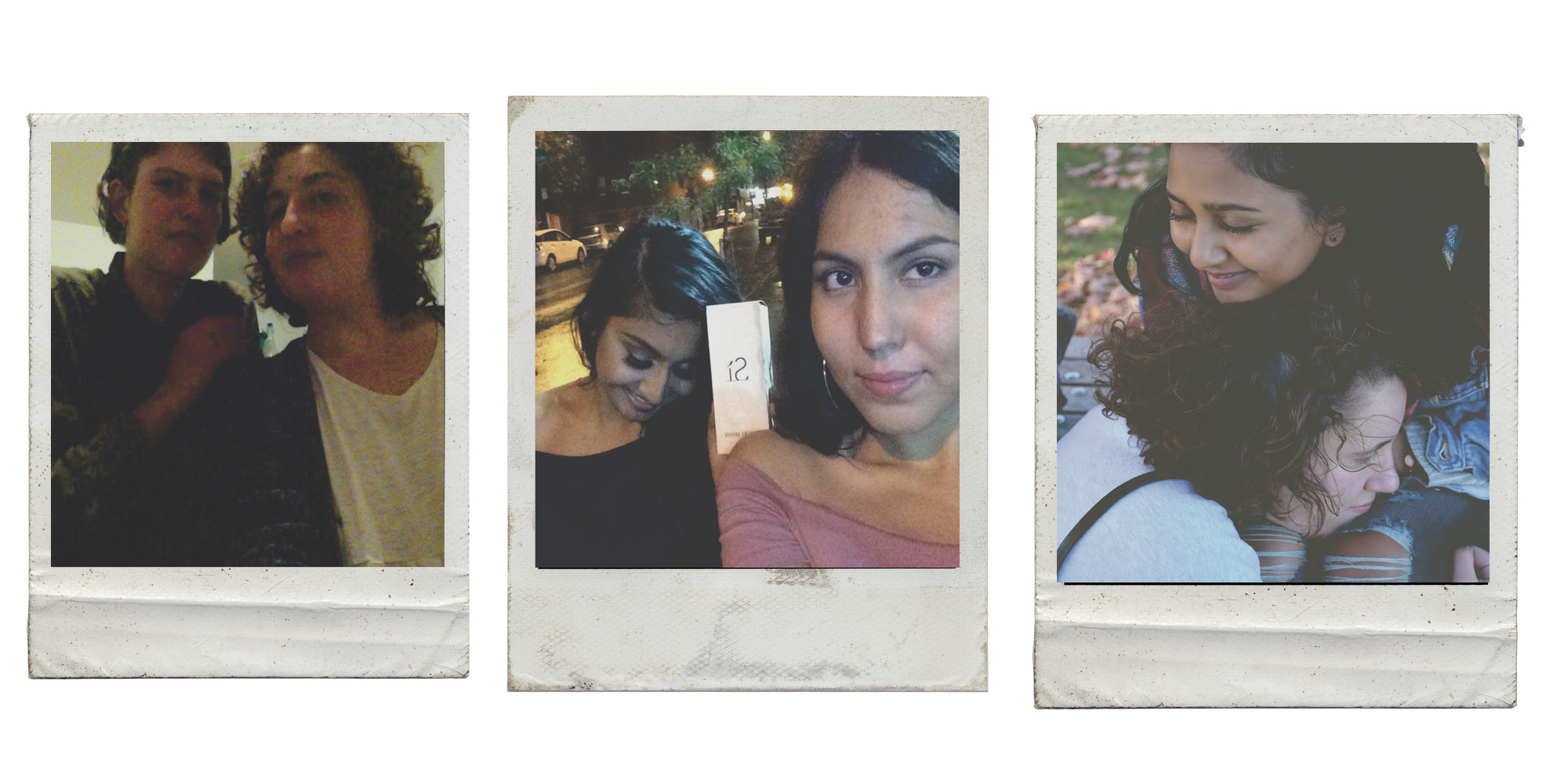
In an article for NYmag’s series, “Single Ladies Week,” author Briallen Hopper quotes the novelist Hanya Yanagihara, who said “Friendship is the most underrated relationship in our lives […] It remains the one relation not bound by law, blood, or money — but an unspoken agreement of love.” I think “unspoken” is the key word here. We are not explicitly bound to friends in the same way we are to lovers. Unlike in dating, there is never a moment where you have ‘the talk’ with your friends – no one asks “what are we?” or “where is this headed?” Platonic commitment happens in slow, implicit ways. First you start making dinner together, and then you manage to sit in comfortable silence with each other, and eventually you know you can call each other, sobbing, at 4 a.m. I don’t mean to say that explicit commitment doesn’t happen within friendships – indeed it does happen, particularly within romantic friendships – but it’s not the norm. There’s no expectation that you’re committed to living nearby and participating in creating a family or trying to be lifelong partners with your friends.
Even within the communities to which I belong, trusted close friends have disappeared upon starting a committed relationship with a romantic partner, without acknowledging the impact of their absence on their friends. Almost always, an explanation for their disappearance is seen as unnecessary. You’re probably thinking, of course one would privilege their romantic partner above their friends. But this hierarchy of love is, at least partially, the result of men having imposed romantic heterosexual relationships as the highest social concern a woman can have – and this preference for romantic relationships has remained ingrained even outside of cis-heterosexual relationships.
“[Friendship] remains the one relation not bound by law, blood, or money — but an unspoken agreement of love.”
—Hanya Yanagihara
I’ve felt deeply and personally hurt the times that friends have disappeared on me – a hurt that felt hard to express precisely, because society makes us believe that romantic relationships are a more legitimate use of time and energy, and because we want our friends ‘to be happy.’ Maybe I’m asking for a revisioning of the hierarchy of love altogether (though I’m under no illusions that this will happen overnight). But, more immediately and more manageably, I really just want my friends to communicate with me about their priorities, and not to assume that everyone buys into the idea that romantic relationships trump friendships.
For me, the history of romantic friendships is a reminder that the way relationships are currently structured in our society is not the way they need to be. In her essay, Rich brings up the idea of a “lesbian continuum,” and argues that all relationships between women – be they coworkers, lovers, friends, or family – exist on the same spectrum, regardless of whether the women identify themselves as lesbians or not. The continuum serves to de-eroticize loving relationships between women, allowing them to feel more at ease in expressing love to each other.
Rich talks about the very real “constraints and sanctions which, historically, have been enforced to insure the coupling of women with men.” She is not arguing that in a world without patriarchal oppression everyone would be bisexual, but rather that heterosexuality should be recognised as a political institution. I would like us to be similarly critical of the way relationships are structured and prioritized. In my own experience, breaking some of those structures has been incredibly fulfilling, and I believe that most people would benefit from feeling comfortable expressing love in more open and varied ways. But the work of crossing these boundaries can be intensely painful, and I’m still often unclear about whether my heart is hurting because I’m unlearning something or because it feels innate to me – and I think it’s valuable to listen to that hurt.

Queering romance
R and I loved each other platonically for at least three years. One night we went out together, and I stayed over at hers afterwards. But the energy between us felt charged. I remember lying next to her, wondering if I should do anything. The electricity buzzing between our bodies felt so strong, she must be feeling it too, I thought. I would never have done anything, but then she reached for me, and then we were making out, and then I was going down on her. The next day neither of us said a word about what had happened. A week later, it happened again – and once again we never talked about it. I knew that we were on exactly the same page, and in my mind I did not view it as sex – I always described it as a physical manifestation of our love, sometimes as “making love.” We both thought we were straight – in fact, she still does.
The sense of loss that I felt when I first learned about the attempted destruction of romantic friendships is slightly compensated for by my belief that they are back on the rise, and have been for a while.
While I was a teenager in Italy it became popular and cool for female friends to start telling each other “ti amo,” which means “I love you.” The phrase used to be reserved solely for romantic relationships and occasionally family. Traditionally, it was only acceptable to tell friends and family “ti voglio bene,” which translated literally means “I want good for you” – i.e. “I care about you.” Almost all of the girls saying “ti amo” were heterosexual – and yet, they would write each other long declarations of love on Facebook that would be validated by their other female peers with numerous likes and comments.
Romantic friendships have particularly strong roots in queer communities, since queer people – often ostracized from their blood families – have long understood the importance of chosen families. When I arrived in Montreal in my first year at McGill, I had only experienced my love for R. Four years later, I now have four explicitly acknowledged romantic friendships, and I have heard of many more, principally among queer friends. Romantic friendships have historically been a way of eschewing reliance on men, and heteropatriarchal systems more generally – but historical discussions of romantic friendships in the 17th and 18th centuries focus almost exclusively on white women. In a contemporary context, I’ve seen many marginalized people – specifically queer and transfeminine folks, and people of colour – turn to forms of romantic friendship, like Black and trans sisterhoods. Denied the security of participating in white cis-heteropatriarchy, marginalized people sometimes begin to replace these structures with radical alternative families, lovers, and friendships.
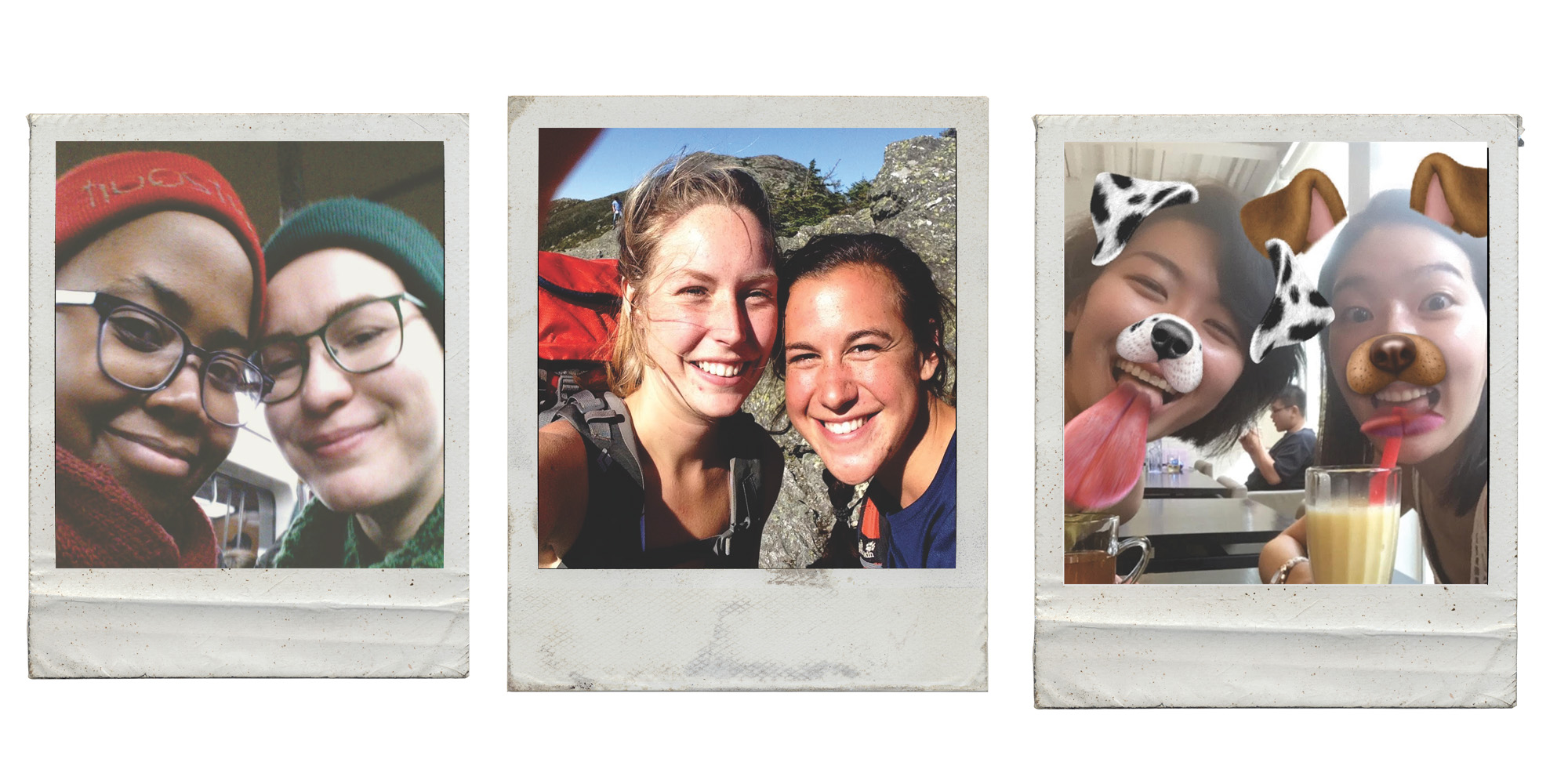
Reconciling sex, friendship, and romance
The fact that we had made love did not register in my mind as being reflective of a sexual orientation – it remained an act of love outside of identity categories. But a year or two later I realised I was queer and eventually came out to R. She was vaguely supportive and it wasn’t an issue until a year later, when I sent her a particularly poetic and adoring birthday message. Her reply was a little brusque, and then I noticed she started avoiding my messages. When I confronted her, she told me “it sounded like I was in love with her.”
She meant I was in love with her as a lesbian would be, and it felt like the lowest form of betrayal. We had both always expressed our love in deeply romantic ways, and we had expressed multiple times to each other how it felt like our love was beyond all classifications, love in its purest form. Looking back, I see that as well as being a betrayal of our relationship, it was also homophobic. We didn’t talk for many months until she eventually apologised, but still refused to talk about what had happened. It feels like the whole incident was directly inherited from the creation of sexology in the 19th century. R used the difference between loving and being in love to leave me defenceless.
It’s precisely this difference that becomes blurred for me in romantic friendships. In some ways I did feel like I was in love with R, but because society inextricably tangles “being in love” with romance and sex, I felt I couldn’t admit to that. There are so many issues with conflating love and sex – including the erasure of asexual folks, and the ways that such discourse condones sexual assault in romantic relationships – that would merit a whole article on its own. For me, the entanglement of the two created a fear of rejection, and held me back from communicating my love.
In every single one of my romantic friendships there have been clearly sexual moments. Two of these friends and I have dated briefly, in very different ways and with varying degrees of success. Each of those times was really hard to navigate in my mind. Why didn’t I feel ‘in love’ with one friend when we were dating, though I had felt like I wanted to fall in love with them when we weren’t? With another friend, I know we have really good chemistry from the times we have been physical, and I would happily date them in theory, but I don’t really feel the need to. With a third friend, I know that some part of me could be deeply in love with them; but that part of me would need specific circumstances to come out, and in the meantime the level of our sexual attraction to each other has oscillated.
One of the many beautiful things about romantic friendships is how they blur the lines of love, sex, friendship, and romance, and how this lack of clear definition gives birth to so many different shapes of affection. But for humans – who adore clear boundaries and unequivocal definitions – the fact that romantic friendships raise more questions than they answer can be disconcerting.
One of the many beautiful things about romantic friendships is how they blur the lines of love, sex, friendship, and romance.
In this piece I’ve been using “romantic relationship” in opposition to “friendship” or “romantic friendship” – but it’s not that simple. When we talk about romantic relationships it’s implied that they are also sexual, though the two are not one and the same. Romantic friendships deconstruct the boundary between romance and friendship, as per their very name, and raise questions about how sex is tied into loving or being in love. If romantic friendships are called romantic because of the intensity of love and the way it is communicated, why aren’t they simply romantic relationships – in other words why does the “friendship” part remain as a qualifier? There is no way I can answer all of these questions, in particular because I believe that the answers are deeply individual or contextual, but they are important departure points for necessary conversations.
What changes in crossing the threshold from romantic friendship to sexual romance? What does the coexistence of all three elements – romance, sex, and friendship – look like? I have endless questions, but I’m learning to tailor each romantic friendship to our specific circumstance.
Living far away from R has affected our relationship and our ability to talk about the nuance of our love for each other. The past summer I went home and finally brought up what had happened and she acknowledged how painful it had been. We still love each other deeply, but honestly, I can’t feel the same way I did. I miss her beyond words – mostly I miss our oneness. But I now have many other romantic friendships that are much more intentionally constructed and in many ways more directly supportive. These people give me so much strength and I cannot see them ever not being a part of my life. We talk about how we want to live our lives and if we can live in a communal situation together, in some cases even help raise children together. I am endlessly grateful for the love we give each other and the deliberate ways we raise each other up and I have resolved a thousand times in my heart to make them an endless priority throughout my life.
